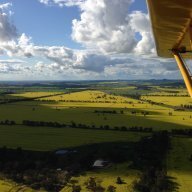-
Posts
1,029 -
Joined
-
Last visited
-
Days Won
13

Roundsounds replied to Pilot_DM's topic in AUS/NZ General Discussion

Roundsounds replied to johnm's topic in Aircraft Incidents and Accidents

Roundsounds replied to johnm's topic in Aircraft Incidents and Accidents

Roundsounds replied to johnm's topic in Aircraft Incidents and Accidents

Roundsounds replied to dsam's topic in Aircraft Incidents and Accidents

Roundsounds replied to biggles's topic in Site Announcements

Roundsounds replied to Stearman's topic in Governing Bodies

Roundsounds replied to Stearman's topic in Governing Bodies

Roundsounds replied to Stearman's topic in Governing Bodies

Roundsounds replied to Stearman's topic in Governing Bodies

Roundsounds replied to Stearman's topic in Governing Bodies

Roundsounds replied to Stearman's topic in Governing Bodies

Roundsounds replied to Romeo Juliet Whiskey's topic in Student Pilot & Further Learning

Roundsounds replied to Romeo Juliet Whiskey's topic in Student Pilot & Further Learning

